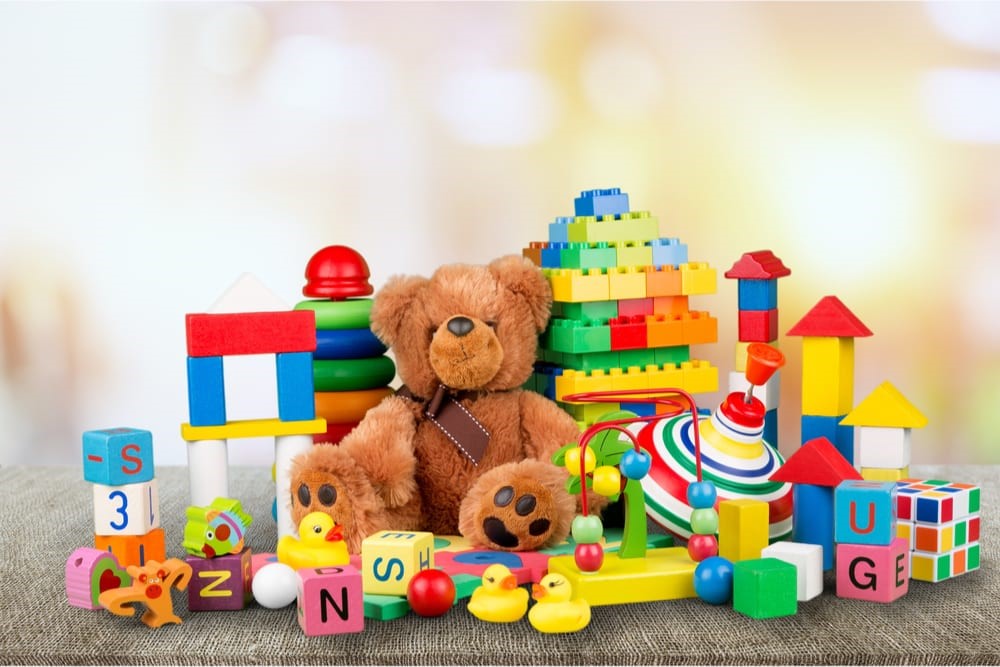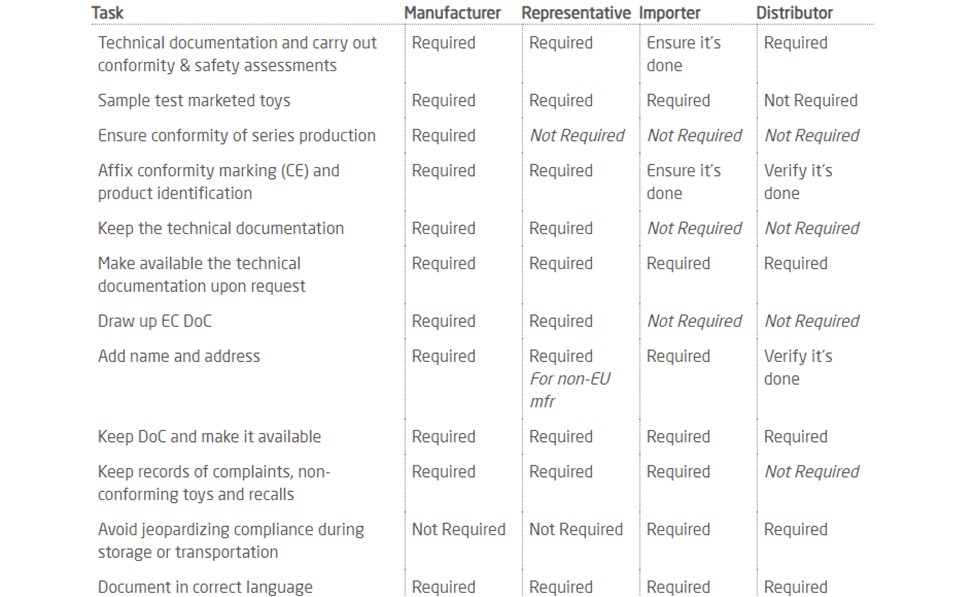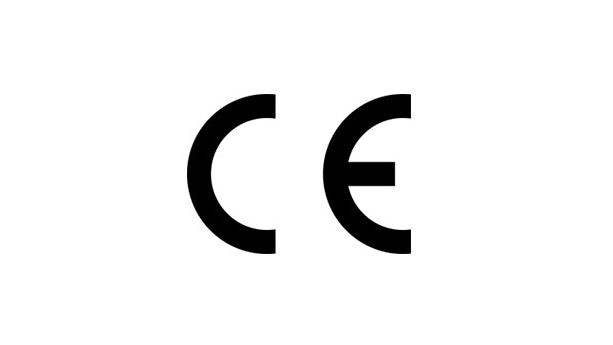Toy Directive correctly applied: These requirements result for your CE-compliant product
We take care of your CE marking along with accompanying measures.
You can affix the CE mark and sign the declaration of conformity without worries.
Willy Lebherz
Geschäftsführer easyCE GmbH

Declaration of conformity done!
Receive your CE declaration of conformity ready for signature.
Risk assessment completed!
CE mandatory risk analysis conducted.
Relevant directives & standards applied!
Your product evaluated against relevant directives and standards.
Technical documentation created!
Receive a pragmatic, user-friendly operating manual.
CE mark attached!
Simply affix the CE mark and you're done.
CE marking routines differ depending on your role
CE AS PRODUCER
Directive 2009/48/EC on the safety of toys establishes strict safety criteria for toys marketed in the EU. It replaces the previous Directive 88/378/EEC and considers technological developments and previously unknown safety aspects. This policy ensures that toys meet both general (such as health and safety risks for children and caregivers) and special risks (such as physical, chemical, electrical). The scope of the Directive includes toys intended for children under 14 years of age, with exceptions such as playground equipment for public use, gaming machines for public use, toy steam engines, toy-like products with internal combustion engines and certain catapults and slings. In addition to the Toy Safety Directive, manufacturers must observe the technical details in harmonized standards such as EN 71 and EN 62115, as the Directive lays down basic safety requirements but technical details are specified in these standards.
The experts at easyCE will be happy to help you place your products on the market and assess special cases. We are happy to support you with CE, UKCA and other marking.
FAQ
Background
Toys play an important role in the development of a child, so they must be safe for children. Ensuring that toys marketed in the EU do not endanger children is an important priority. EU legislation is designed to ensure that toys meet the world’s most stringent safety requirements, especially with regarding to the use of chemicals in toys.
What is Directive 2009/48/EC on the safety of toys about?
The Directive lays down the safety criteria that toys must meet before they can be placed on the EU market. Toys must also comply with all other EU legislation applicable to them, which are divided into two groups:
- general risks (Article 10, paragraph 2): Health and safety of children and other persons such as parents or caregivers
- specific risks (Annex II) are primarily related to the characteristics of the toy: physical and mechanical, flammable, chemical, electrical, hygienic and radioactive risks
The Directive 2009/48/EC on the safety of toys replaces the former Directive 88/378/EEC. She adapted the legal framework to technological developments and previously unknown security aspects. The application and enforcement are aligned with the so-called "new legal framework".
From design to production to the final product in the store, toys must meet a complex combination of requirements and demonstrate compliance.
What is the scope of the directive?
The Directive defines toys as: "Products intended to be used by children under 14 years of age to play, whether or not exclusively". The scope of the directive covers the defined products, except for the following:
- playground equipment for public use
- Slot machines intended for public use
- Toy steam engines
- toy vehicles equipped with internal combustion engines
- Catapults and slingshots
What do I have to observe apart from the toy directive?
As the Directive contains basic safety requirements (i.e., general principles only), the technical details are regulated in harmonized standards (EN 71 and EN 62115).
Why is it important that the products comply with the directive?
Toys placed on the market in the EEC must comply with the relevant Community legislation in order to guarantee public interests such as health and safety through consumer and environmental protection.
The Directive allows the free movement of safe toys in all EU Member States. Toys that do not meet the requirements laid down in the Directive may not be placed on the EU market. Economic operators are responsible for complying with regulations in accordance with their role in the supply chain.
What are the obligations for economic operators?
Economic operators to whom Directive 2009/48/EC on the safety of toys imposes explicit obligations include manufacturers and their authorized representatives, importers and distributors, as set out in the following table:

What do I need to document?
All European directives and regulations on CE marking oblige manufacturers of non-food products to produce technical documentation before the final declaration of conformity which can also be used as "technical documentation" or "dossier" is referred to. The technical documentation shall demonstrate that a product meets the relevant product safety requirements. The technical dossier
- contains all relevant data on the means of ensuring conformity
- is written in one of the official EU languages
- must be kept for at least 10 years after placing on the market
easyCE is happy to advise you on general and detailed questions about technical documents.
What is a declaration of conformity?
The CE declaration of conformity is a legal document in which a manufacturer formally declares that a product complies with the essential health, safety and environmental requirements of the relevant directives.
By drawing up and signing the EU declaration of conformity, the manufacturer assumes full responsibility for the CE conformity of the product. The declaration of conformity is issued only after the compilation of the technical documentation (also known as the technical dossier). easyCE can support you in the conformity assessment process with years of experience and prepare a declaration of conformity for you.
What are the conformity assessment procedures?
Conformity assessment is the process by which a manufacturer proves that its toys meet the essential safety requirements of the Directive. The directive lays down exactly who has to carry out the procedure and how it works. Depending on the type of toy, the conformity assessment can be carried out using one of two methods: self-assessment or third-party testing.
How does a self-check work?
Self-examination is applied in cases where harmonized standards cover all relevant safety aspects of a toy. In this case, the manufacturer must apply the existing harmonized standards and ensure that the toy complies with these standards. The manufacturer must also introduce an internal production process that does not require the involvement of a notified body. easyCE is available to advise or actively assist you with the entire process on request.
How does third-party testing work?
Testing by third parties, often referred to as "EC type examination", is required if:
- there are no harmonized standards for the product
- harmonized standards have not or only partially been applied by the manufacturer
- one or more harmonized standards with a restriction have been published
- the manufacturer considers that the type, design, construction or purpose of the toy requires third party verification.
What are notified bodies?
Notified bodies (BS or notified bodies BS) carry out EC type-examination and issue EC type-examination certificates. EC type-examination is one of the two possible conformity assessment procedures for placing toys on the EU market. The notified bodies are designated by the individual EU countries.
What are the differences between safety assessment and conformity assessment?
The aim of the safety assessment is to identify the potential hazards of a toy and to assess the potential exposure to those hazards. The aim of the conformity assessment procedure, however, is to prove that the toy complies with the essential safety requirements of the Directive.
In general, the safety assessment is made before the toy undergoes the appropriate conformity assessment procedure. However, it can also be completed at a later date. Both procedures must be completed before the toy is placed on the market.
Regardless of the type of conformity procedure required, toy manufacturers must always carry out an analysis of all hazards (i.e., specific risks) that may arise from the toy and assess potential exposure to such hazards.
What follows the determination of conformity?
The CE documentation is created and the CE marking is affixed, and the expertise of easyCE is also available for these steps.
What should be considered for the CE marking?
Toy products must bear the CE mark to indicate their conformity and only then may they be sold on the EU market. The CE marking must be permanently attached to the product, packaging and instructions for use. They must:
- visible, legible and indelible
- if it is not visible from the outside, stand on the packaging.

What documents do I need for CE conformity?
Necessary documents include:
- CE declaration of conformity (DoC) (see above)
- Instructions for use included:
- Identification/type/model number
- Instructions for installing the product
- Overview of the relevant parts and part descriptions
- Safety instructions
- Instructions for using
- Instructions for charging and/or refilling
- Instructions for environmentally friendly disposal of the product
- Technical dossier (see above)
- Warnings
Where can I find information on special warnings?
Specific warnings are required for certain categories of toys and can be found in Annex V to the Toys Directive.
Hundreds of companies trust easyCE

With easyCE, product compliance is really ‘easy’
Approach to CE marking
Type and manner of support
Scope of support
Contact during project processing
Find the easiest way to obtain the CE mark
Abbreviated process for CE derived directly from CE
All-inclusive or modular – whatever you prefer
Personal contact with experts who take your wishes into account
other CE service providers
Often lacking in sound judgement and unnecessarily complicated
Mostly flexible but often bureaucratic
Mostly flexible in terms of support scope
Mostly personal contact
CE Software
Follows standardised process; special circumstances not taken into account
Double burden for you: software management + no support during processing
Only according to software scope and purchased modules
No contact
You want support that lightens your workload and doesn't create more work.
Get CE-marking done in 3 simple steps
Step 1
Request expert opinion
Ask for our expert opinion free of charge and find out what is necessary for the CE marking of your product. Be prepared to describe your product in broad terms.
Step 2
Receive our offer
If your product is subject to CE marking, we offer you our support with the CE marking and all accompanying measures. We will be happy to explain necessary steps on the phone.
Step 3
We get it done
When you place an order, you will be assigned your own personal CE expert who will carry out your CE marking and accompany you throughout the entire process. Your expert will also be at your side after the CE marking has been successfully completed.
Get CE-marking done, worry-free
Trust the experts of product safety and conformity


Willy Lebherz - Founder and Managing Director of easyCE
- Expert in product safety and conformity since 1995
- Recipient of the "Medal of the Order of Merit of the Federal Republic of Germany", awarded in 1983 by the then Federal President Carl Carstens
- Master of measurement and control technology
- Captain (ret.), Project Officer for Technical Logistics in the Army Material Office and Chief of the Telecommunications Repair Company
easyCE is a digital, dynamic engineering office with a focus on product safety and product conformity - especially CE-marking. We support manufacturers, operators and dealers in designing products safely and offering them on the market in compliance. We are a "full-service provider" and can take over the entire conformity assessment process for you if you wish. To do this, we support you in carrying out risk assessments, researching standards, product analyses, developing suitable safety precautions, preparing user-friendly technical documentation, coordinating tests and all other accompanying measures. easyCE was founded in southern Germany, but is now active globally.
We know what you need to do to get CE-marking done, worry-free.
